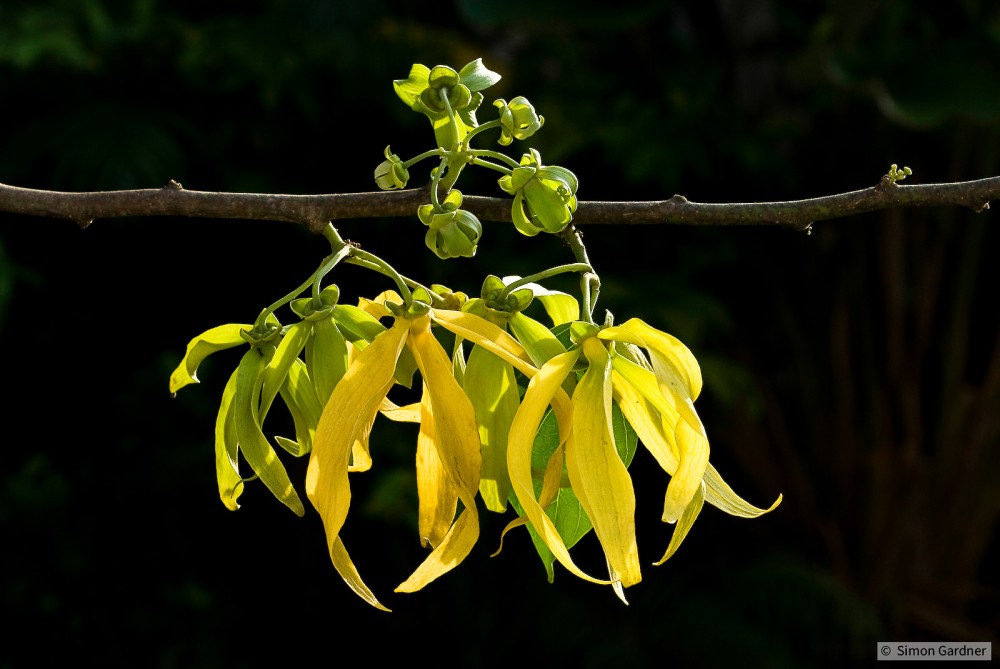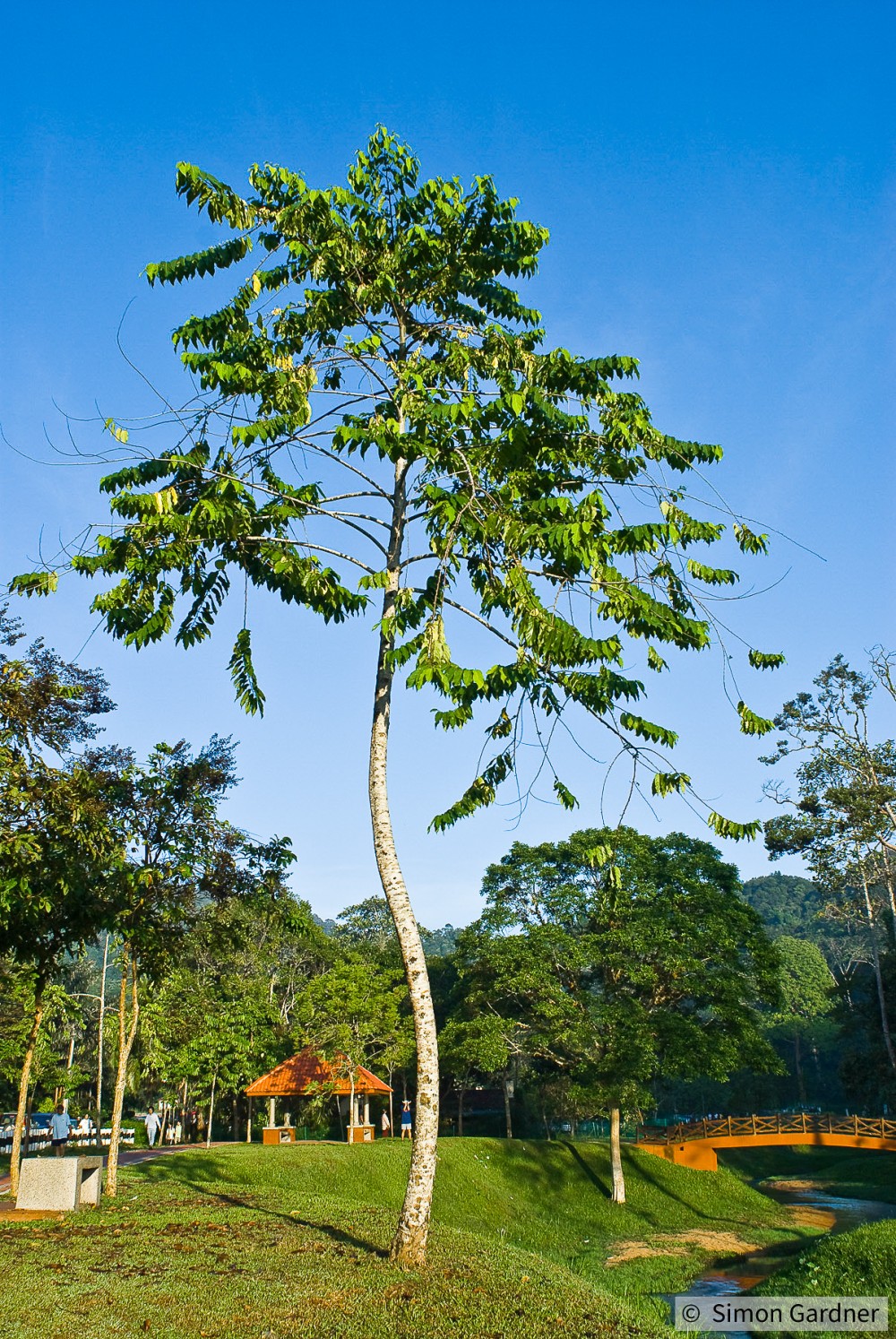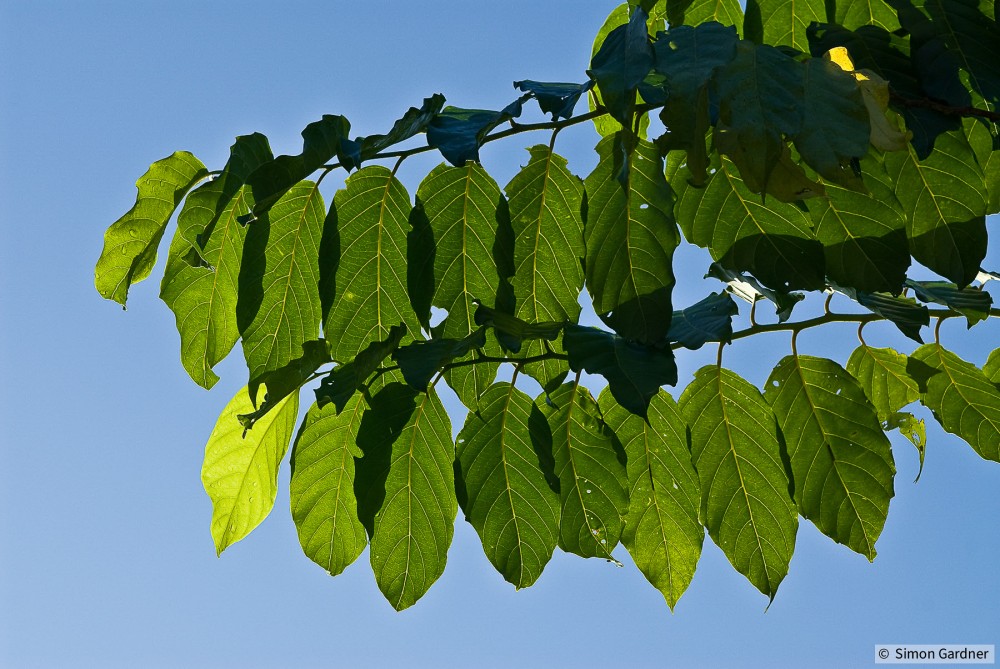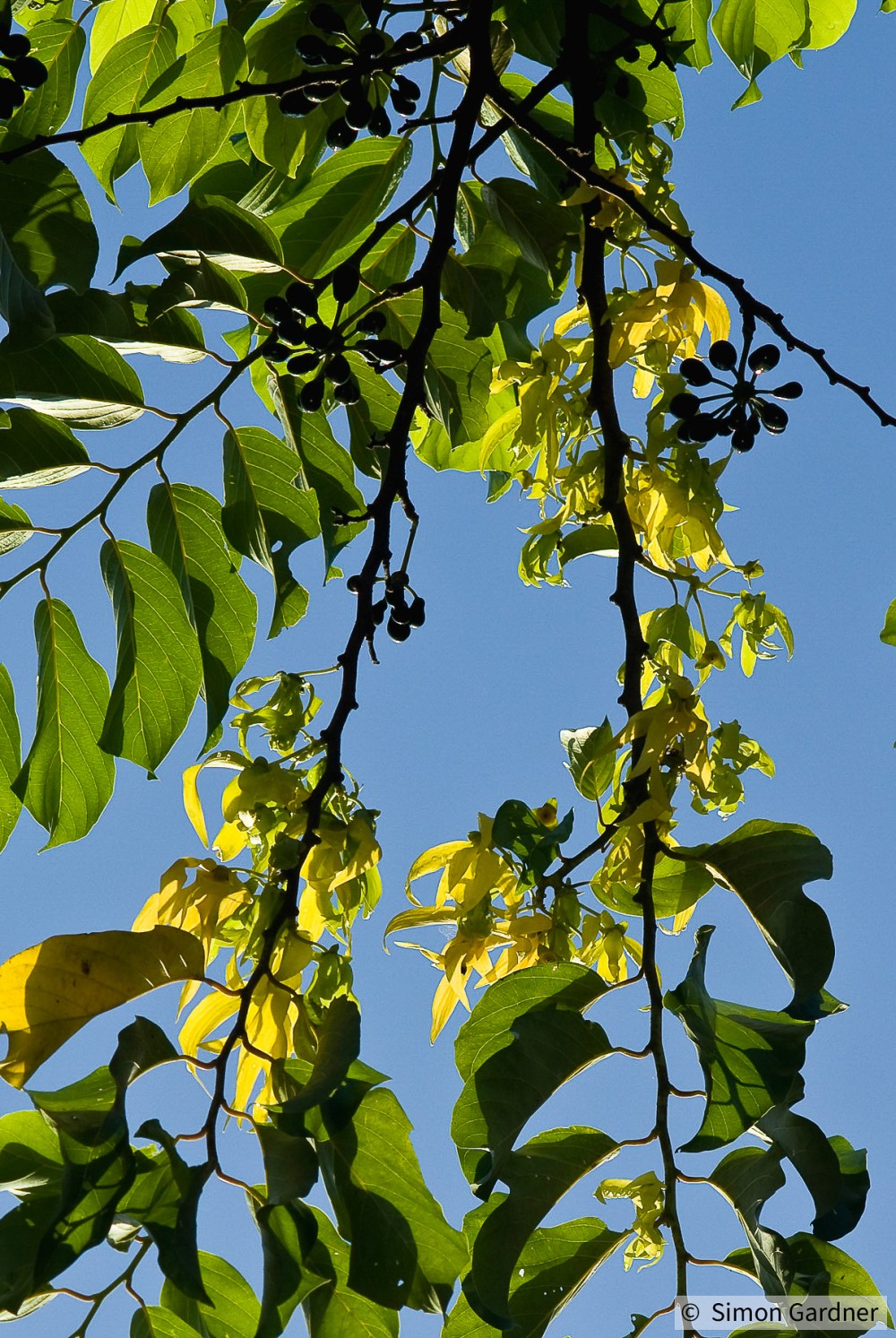No Data Found
Cananga odorata
Kenanga, Ilang-Ilang, Ylang Ylang, Cananga, Nyai
![]() High Sensitivity
High Sensitivity
| Species Name | Cananga odorata |
|---|---|
| Common Name | Kenanga, Ilang-Ilang, Ylang Ylang, Cananga, Nyai |
| Family | Annonaceae |
| Genus | Cananga |
| Taxonomic Synonyms/Past Names | |
| Taxonomic Notes |
Agree with the details?
Login to Vote Now
Species Information
- Evergreen tree up to 30 m tall with an irregular crown and stiff spreading branches. Leaves 8-20 cm long, often drooping, oblong to narrowly ovate with a tapering tip. Flowers up to 8 cm long, pale green turning yellow, very fragrant at flower maturity, in short, unbranched clusters. Fruits are 1.5-2.5 cm long on individual stalks, arranged in a dense cluster, dark green ripening blackish.
- Widely distributed from India throughout Southeast Asia to Northern Australia. It is often cultivated for its fragrant flowers.
- Forest margins in lowland forests
- Data Deficient
- Its growth exceeds 5 m (16 ft) per year, and it attains an average height of 12 m (39 ft) in an ideal climate.
No Data Found
No Data Found
No Data Found
- It has fibrous roots. Complaints of the roots damaging structures are rare.
No Data Found
No Data Found
No Data Found
No Data Found
No Data Found
No Data Found
No Data Found
No Data Found
- It does not have resin or latex [1]
No Data Found
No Data Found
No Data Found
No Data Found
- Its fruits are fleshy, small, 1.5-2 cm long, borne in axillary clusters, ripening dark green to black. No staining. [1]
No Data Found
No Data Found
No Data Found
No Data Found
- It has medicinal properties, not poisonous. [1]
No Data Found
No Data Found
No Data Found
No Data Found
No Data Found
No Data Found
No Data Found
No Data Found
No Data Found
No Data Found
No Data Found
No Data Found
No Data Found
No Data Found
No Data Found
No Data Found
No Data Found
No Data Found
No Data Found
- pH of 5.0-6.5 [1]
- Grows in full or partial sun and prefers the acidic soils of its native rainforest habitat. Cultivated in temperate climates under conservatory conditions. Suitable for various habitats so long as they have well-drained soil. Specimens in Kepong Botanic Gardens, Selangor, did not do well in wet areas.
No Data Found
No Data Found
No Data Found
No Data Found
No Data Found
No Data Found
No Data Found
No Data Found
No Data Found
No Data Found
No Data Found
No Data Found
No Data Found
- Widely distributed in India. [1]
No Data Found
No Data Found
No Data Found
No Data Found
No Data Found
- Tolerates water absence but for less than one month. Needs moderately dry conditions to maintain tree fertility and flower production. Specimens planted in a dry area survived but still needed watering. Occurs in Perlis and Kedah.
No Data Found
No Data Found
No Data Found
No Data Found
- It has brittle branches and does not handle strong winds well. However, it regrows vigorously even after heavy wind damage.
No Data Found
No Data Found
No Data Found
No Data Found
- Does well in Malaysia's climate. Needs at least moderately dry conditions to maintain flower production and extra watering as the dry season approaches.
No Data Found
No Data Found
No Data Found
No Data Found
No Data Found
- Stem borers, flower-eating beetles, and insects that cause the leaves to wilt have been reported. [1]
No Data Found
No Data Found
No Data Found
-
Insufficient Data
No Data Found
No Data Found
No Data Found
No Data Found
- It is an important food item for birds, such as the collared imperial pigeon, purple-tailed imperial pigeon, Zoe's imperial pigeon, superb fruit-dove, pink-spotted fruit-dove, coroneted fruit-dove, orange-bellied fruit-dove, and wompoo fruit-dove. The Sulawesi red-knobbed hornbill is an effective seed disperser for Cananga odorata. Bats, monkeys, and squirrels also eat the fruits. It is often used for aromatherapy due to its fragrant flowers. It is also used for rainforest regeneration in Australia due to its fast growth and ability to attract birds and bats to its fruit. [1]
No Data Found
No Data Found
- The flowers are used in baths and spiritual ceremonies. In Indonesia, they are spread onto the beds of newlywed couples. In the Philippines, they are strung into necklaces with those of the Sampaguita, worn by women and used to adorn religious images. Has medicinal uses: The bark is used in traditional medicine to treat stomach problems, and the dried flowers treat malaria. The essential oils and extracts of the plant have proven anti-microbial, anti-inflammatory, and insect-repellent properties, amongst other bioactivities. Essential oil from the flowers is used in aromatherapy and the cosmetic, food, and fragrance industries. [1]
No Data Found
- The flowers are used in baths and spiritual ceremonies. In Indonesia, they are spread onto the beds of newlywed couples. In the Philippines, they are strung into necklaces with those of the Sampaguita, worn by women and used to adorn religious images. Has medicinal uses: The bark is used in traditional medicine to treat stomach problems, and the dried flowers treat malaria. The essential oils and extracts of the plant have proven anti-microbial, anti-inflammatory, and insect-repellent properties, amongst other bioactivities. Essential oil from the flowers is used in aromatherapy and the cosmetic, food, and fragrance industries. [2]
Contributors: anonymous
Last Updated: 2023-03-15




No comments